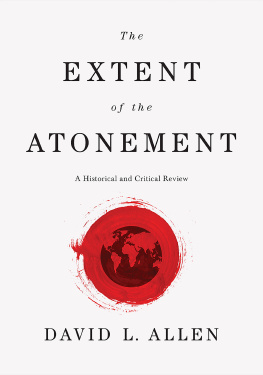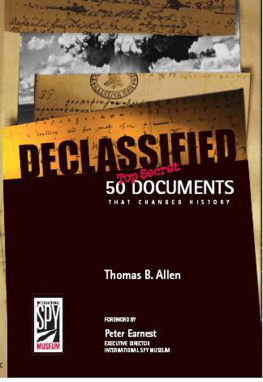For Arlo, and the fishies
Contents
Preface
Do you want to use less water? Capture rainwater falling from the sky? Redirect water from your shower to irrigate the landscape? Improve the health of rivers and creeks in your community? If so, this book is for you.
You may be interested in water conservation because your well is running dry, or maybe you work with a watershed restoration group. Perhaps you want to promote and protect clean rivers and oceans because you love to fish or swim, or youre a parent, grandparent, or aunt or uncle and want to create a healthy world for future generations. If youre a landscaper, plumber, or building contractor, offering sustainable services to clients makes good business sense. And if you dont have access to a municipal water supply, conserving and reusing water may be far preferable (and much more affordable) than acquiring a new water supply. Regardless of your motivation, youve already taken the first step.
Nearly 15 years ago, while I was living with six friends in a rented house in Oakland, California, I had my first water shock. A water bill arrived in the mail first time Id ever seen one. I cant remember exactly how many gallons we had used, or how much we had to pay, but I clearly remember my shock at seeing it. The first two questions in my mind were How can we possibly be using this much water?! and Where does this water come from, anyway? My search for answers to these questions sparked the beginning of my water education. As I learned more about this water system I depended on and how damaging it was I began to look for alternatives.
The first change I made was to redirect the bathroom sink drain to dump into a bucket. We used this greywater to bucket-flush the toilet. It was so simple we couldnt stop there. My housemate Cleo and I tackled the shower next; we reconfigured the pipes and built our first greywater system. How satisfying it was when the shower water finally flowed into the garden.
This book shares the knowledge Ive gained over the past 15 years and shows you how my friends and I transformed our own home to conserve and protect Earths precious freshwater. In these pages I will show you how to improve the efficiency of your fixtures, reuse household greywater, collect rainwater, and install waterless toilets.
Writing a how-to book is an exciting opportunity to share these concrete skills with more people. Besides the how, there is the why: in Part I, I talk about why our current water system is unsustainable and what simple, small-scale changes can help fix it. Part II covers the principles of simple greywater, rainwater catchment, and composting toilet systems, providing step-by-step instructions that anyone can implement with a few tools and basic construction skills. These simple, low-cost systems can cut your homes water consumption in half, or better. Because the book is intended for ordinary DIYers, I dont focus on complex systems requiring specialized tools and training, but have included profiles of people living with advanced systems, as well as resources for learning more about them.
Ive also included tips for working with (and improving) state and local regulations, as well as interviews with progressive regulators and examples of what worked for us in California. Policy change isnt a standard feature for how-to books, but when it comes to water-wise systems, codes and local agencies can be a major barrier.
I hope this book helps you transform your home to save water and create productive, ecological landscapes.
Part 1
Water-Wise Basics
Whats Wrong with Our Water Systems and How You Can Change It
Water, save it for what you love, is one of my favorite water utility slogans, designed to teach people the importance of conservation. Others, such as Every drop counts and Got water? Do your part, be water smart, remind us of the small steps we can take to reduce overall consumption. While fixing a leaking toilet and installing a water-efficient showerhead may not be as exciting as building a greywater system, these simple actions can save as much, or even more, water.
The discussion in Part I of this book sets the stage for the how-to projects of Part II. Before crawling under the house to check out your plumbing, or researching local rainwater data to plan a rainwater catchment system, its important to understand where your water comes from, where it goes, and what is impacted along the way. presents a range of practical options for reducing water consumption at home: finding and fixing leaks, choosing efficient irrigation systems, and designing beautiful, productive and water-efficient landscapes. Youll also learn the basics of greywater, rainwater, and composting toilet systems so you can determine which are a good fit for your home (maybe all of them!).
Chapter 1
Why Conserve Water?
We need water for almost everything we have and do: our food, clothing, electricity, and almost every item in our homes, not to mention drinking, cooking, and cleaning. In the past, water shaped civilizations, determining the size and locations of population centers as well as travel routes and what food was available. Today, natural water systems have been re-engineered for human use: instead of flowing to the sea, most water flows toward cities, large agriculture, and industry.
When we turn on the kitchen faucet, out flows water like magic. Only its not magic. That water came from somewhere. If it hadnt been diverted by people, it would have flowed in a river, creek, spring, or underground aquifer. Where did that water come from? Which river? What creek? How deep an aquifer? Is it being recharged as fast as its being pumped out?
Answers to these questions may not be obvious. The infrastructure connecting our taps to the water source has become practically invisible, and most people dont think about what river flushes down the toilet or how many salmon died when the dam was built to supply their town. But we should. And when we do examine our water system, it becomes apparent what needs to change.
Reasons to Conserve Water
When we save a gallon of freshwater, its a gallon our water company wont look for in a new dam, a water transfer, or a desalination plant to provide more supply. Its a gallon that could keep a river deeper and cooler, oxygenating a salmon as it swims to its spawning grounds and preventing the growth of toxic algae. Its a gallon that emerges from a desert spring, providing lifesaving drinking water for animals. Its a gallon that can grow local food in a sustainable way without the waste and pollution of industrial agriculture.
Save Water, Save Energy, Spare the Air
Hidden behind each drop of water is a spark of energy. It takes energy to transport water from the source to our homes. It takes energy to clean the water to drinking quality and more energy to heat it. Just warming the water for one shower takes as much energy as it does to power a light bulb for more than 200 hours (25 gallons takes 17,000 Btus or 5 kilowatt-hours). This close relationship between water and energy, referred to as watergy, or the water-energy nexus, connects our water-conserving practices to climate change and air pollution. At the household level about 20 percent of our total energy use goes toward heating our water. At the sewer plant even more energy is used to clean the water for disposal. In California nearly 20 percent of the electricity and 32 percent of the natural gas used in the entire state is for water.

















